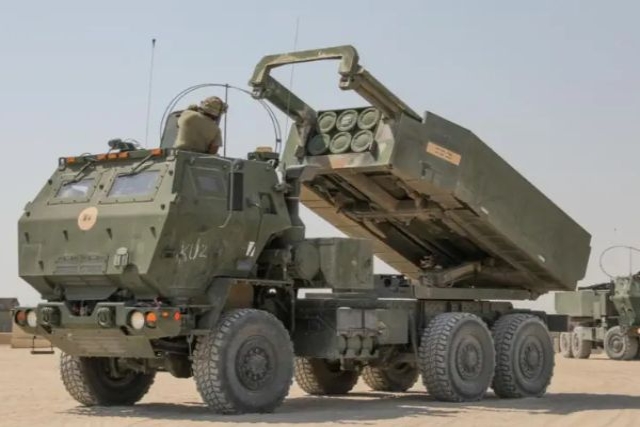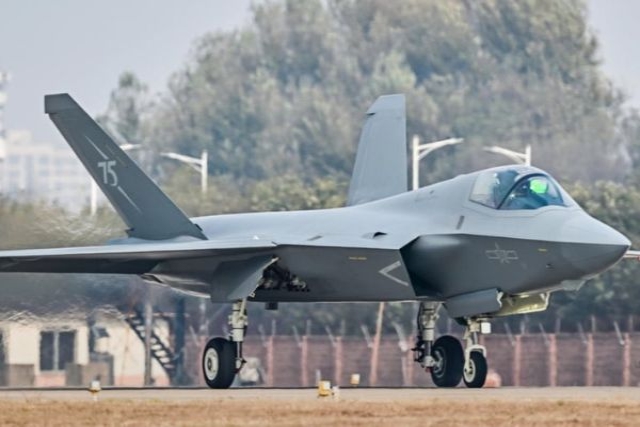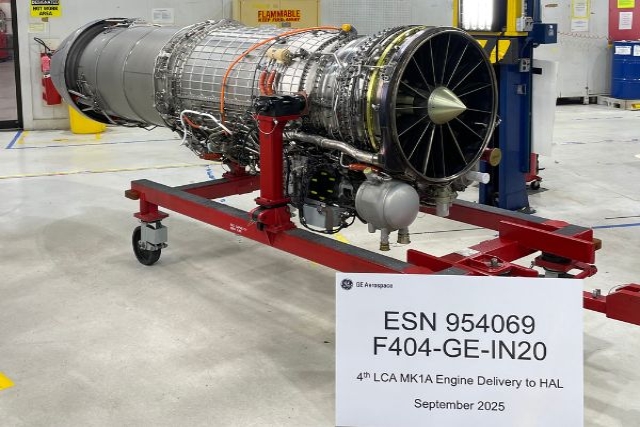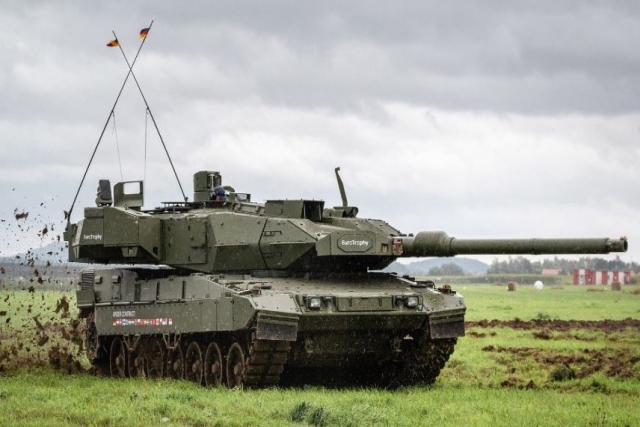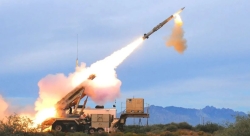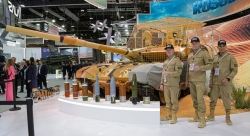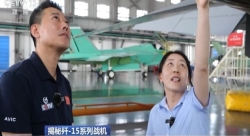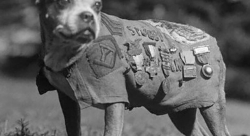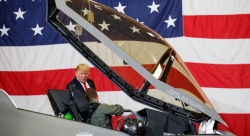MITS Capital’s CEO on Backing Ukraine’s Defense Tech
Perry Boyle explains why his fund targets Ukrainian startups building battlefield-ready systems, how export barriers stall growth, and why international demand is key.
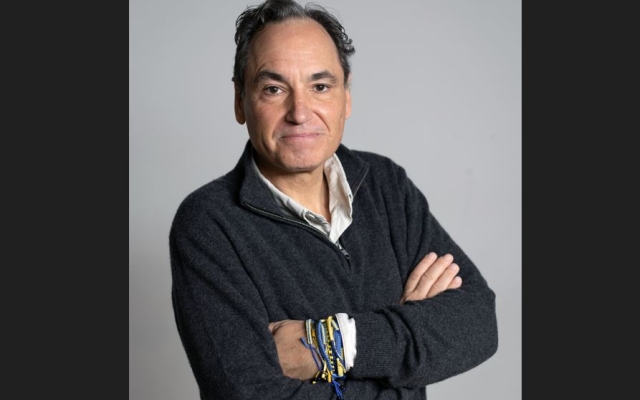
Perry Boyle, CEO of MITS Capital
Perry Boyle, CEO of MITS Capital, leads one of Ukraines most active defense technology investment groups. Together with co-founders Denys Gurak and Anton Melnyk, he supports startups from early lab stages to large-scale funding, aiming to turn battlefield innovations into scalable companies. In this interview with Defensemirror.com, Boyle discusses how MITS navigates war conditions, investment barriers, and global demand, while outlining why the fund is betting on battlefield innovation, the obstacles slowing growth, and the international interest shaping their future.
DW : MITS Capital recently led a $1.5M investment round in Teletactica and over $3M in Tencore. What core criteria do you use to evaluate defense tech startups in Ukraine?
Perry Boyle, CEO of MITS Capital: MITS targets best-in-class Ukrainian defense tech companies. This means a management team driven to succeed. We look for companies that make something that Ukrainian warfighters want to use on the battlefield and that will have international demand once export licenses are granted. We prefer companies that make something that NATO doesn’t have or that can produce a product at 40% or less than the NATO equivalent. We want companies that drive constant innovation and product improvement.
DW : What made the two companies stand out as investment-ready companies despite the high-risk environment?
Perry Boyle, CEO of MITS Capital: Teletactica and Tencore are two exceptional companies: Teletactica's jam-resistant communications system contributes to the asymmetry of Ukrainian forces against the adversary. They produce something that NATO lacks at a price point NATO cannot match. We like to invest in things that save Ukrainian lives. Tencore’s TerMit is the most cost-effective method for the extraction of wound warriors. It is rapidly scaling production to thousands of units a month. We have received a lot of interest from other countries for dual-use applications of the TerMit. Tencore has integrated robotics into its platforms and will be coming out with some very cool things in the near future.
DW : How does the MITS accelerator program help defense startups overcome Ukraine’s structural and regulatory investment barriers?
Perry Boyle, CEO of MITS Capital: MITS Accelerator helps emerging defense tech companies on how to sell into Ukraine’s defense procurement process. For this we bring in speakers from various ministries to explain the process. One of the impediments is access to private capital. Successful graduates are eligible for investment from the MITS Lightning Fund, ranging from $500k to $3mm. As the lead investor, MITS Capital helps these companies secure funding from other investors. The one regulatory impediment that we don’t have a solution for, yet, it export controls. Ukraine’s export control on items that the Ukrainian government is not buying is very bad public policy. It is so bad that we believe it will change. The Trump/Zelenskyy drone deal may be the catalyst for that change. Ukraine does not have a mature defense tech regulatory regime. There are no SAFE notes, no IPO exits or even domestic strategic buyers for Ukrainian defense tech companies. MITS Capital helps MITS Accelerator companies create EU entities to mitigate these shortcomings in the Ukrainian system and is working on long-term exit options. One structural impediment to Ukrainian defense companies is that the EU and US have almost completely cut them off from their financial systems. Very few banks will even open bank accounts for them. This includes major companies like Citibank and JPMorgan. MITS Capital has leveraged its scale to create banking relationships in the US that its portfolio companies can access.
DW : Could you walk us through a recent example where a prototype developed in the accelerator was quickly adapted to the battlefield?
Perry Boyle, CEO of MITS Capital: For the most part, MITS Accelerator only accepts companies that have a minimum viable product that is already deployed on the battlefield. For concept-stage companies, we leverage the Ukrainian government’s BRAVE1 unit to help them reach the MVP level where we can get involved. One example of rapid scaling from initial deployment has been Tencore’s Termit ground drone, which has become a standard option for battlefield evacuations. Another would be Vidar’s acoustic system for pinpointing the location of incoming artillery fire. Likewise, OKO’s infrared cameras are rapidly taking market share from foreign competitors in Ukraine.
DW : You’ve spoken openly about the difficulties of investing in Ukraine—from lack of war risk insurance to capital export controls. What reforms would most immediately unlock more private capital?
Perry Boyle, CEO of MITS Capital: In the current situation, there is no question that the single greatest path to unlocking private capital for Ukraine would be to permit exports where Ukraine has more capacity than the government can purchase. This would be of huge benefit not only to private investors but to Ukraine’s economy as a whole and would generate much-needed foreign exchange. I would expect Ukraine’s sovereign borrowing costs to drop if it permitted exports. The next would be to leverage Diia United’s efforts to harmonize the private capital investing regime with that of the US. There is no reason Ukraine cannot adopt the world’s best legal regime for investing risk capital. Next, Ukraine could leverage its relationships with allies to open their banking systems to Ukrainian defense companies, providing them with working capital financing. We can’t even get Revolut, an international banking company owned by Ukrainians, to open accounts for Ukrainian defense companies. After that, make it easier for investors to get into and out of Ukraine. No one is going to invest in a country that they can’t access to build relationships and conduct due diligence.
DW : How does “Diia.City” change the game for international investors? What challenges remain even under this framework?
Perry Boyle, CEO of MITS Capital: It’s a step in the right direction, but you shouldn’t need a virtual city to do what should be done for the entirety of Ukraine. Creating an attractive legal regime for foreign investment in Ukraine seems like it should be a national imperative given Ukraine’s capital-starved situation.
DW : Tencore’s TerMIT ground robot has been described as modular and multifunctional. How do such technologies change the frontline dynamic?
Perry Boyle, CEO of MITS Capital: Things like the TerMIT save Ukrainian lives. Think about it this way. Using a <$10k ground drone to evacuate wounded means that there are two soldiers whose lives do not need to be risked to do this and who can be deployed converting bad Russians to good Russians. Their lives are precious to Ukraine, and, sadly, a sizable portion of evacuations result in the death of the evacuators. It is a much better allocation of Ukrainian resources to do this with drones rather than people. The U.S. Army’s chief technology office said in a recent interview that he wants the first thing the enemy sees in combat to be robots, not humans, in every possible situation. This is a core principle of asymmetric warfare, and Ukraine must lead this revolution, given its challenges manning the front line. Tencore is not alone in working to adapt its platform to replace and/or enhance the soldier’s capabilities in defending the homeland. But the low-cost nature of the ground drone makes it applicable for many other situations. Today I received a call from an American company interested in purchasing TerMITS to combat forest fires in the US West. Where a <$10k drone can replace an invaluable human–that seems like an excellent return on investment.
DW : With UGVs now involved in tasks like evacuation and logistics, how do you see the economics of war influencing future investment trends?
Perry Boyle, CEO of MITS Capital: Russia cannot sustain its invasion of Ukraine without Chinese funding. Ukraine cannot sustain its defense without European financial support. On a geopolitical economic basis, Russia’s war is a battle between the Chinese and the European economies. China is a lower-cost producer and a larger economy. Europe is relying on will to fight and innovation to equalize Ukraine’s ability. This is bad economics for Europe. Their best economic and political outcome is to neutralize China’s support by defeating Russia in Ukraine with European money, weapons, and troops added to the might of Ukraine. The war would be over in weeks, as China would not risk its economic relationship with Europe to directly participate in a war against Europe. At the investment level, the side that puts the most ordnance on target wins. At MITS, we focus on cost-per-effect as our guiding metric. Literally, how do we get the biggest bang for the buck. This is not how most US/EU investors operate. Cost-per-effect is not as important to them as investing in companies that can get government contracts. We hope that Ukraine and other countries will move away from the American obsession with high tech to a more rational cost-per-effect model of defense spending. We believe we are early in this approach, and it will ultimately yield superior investment returns. For commodity expendables like ammunition and ordnance, the low-cost producer should win market share. There is a global shortage of ammo and ordnance. Ukraine can produce this at less than 40% of the NATO price, but lacks the investment capital to scale up production. MITS Capital is working on a solution to that.
DW : Can you share your perspective on the July 2025 incident where Russian soldiers reportedly surrendered to a UGV? What does this signal about the evolving role of robotics in warfare?
Perry Boyle, CEO of MITS Capital: I think those orcs would have surrendered to a child holding a flower. Only the sickest of Russians really want to be killing Ukrainians. The drone was the first thing they saw. This incident is indicative that there will be increasing robot/human interaction on the battlefield. Sometimes it will result in death. It would be preferable if the outcome is a capture, allowing Ukraine to trade Russian orcs for Ukrainian humans. The combination of robotics plus AI is not just the future of war, but the future of almost everything.
DW : Teletactica is preparing its communication systems for NATO standards. How important is export readiness in your investment thesis?
Perry Boyle, CEO of MITS Capital: Export readiness is not just important; it is imperative. As stewards of private capital, we can only invest in companies that have international demand for their product. NATO standards capability is a critical performance measure for our portfolio companies. You didn’t ask about Ukrainian companies’ reliance on Chinese components. We push our companies to replace Chinese components as rapidly as possible. This can result in somewhat higher cost-per-effect, but we can still produce at compelling prices to free world buyers.
DW : Given Ukraine’s current export restrictions, what strategies do you support to help defense companies expand internationally?
Perry Boyle, CEO of MITS Capital: The current export restrictions are so obviously bad for Ukraine that we are operating under the assumption that they will be lifted. How can there be a Trump/Zelenskyy drone deal if Ukraine won’t export? We are encouraging our portfolio companies to prepare for export markets by identifying prospective international buyers and establishing sales channels to reach them.
DW : Are there specific European markets that MITS Capital is targeting for its portfolio companies?
Perry Boyle, CEO of MITS Capital: Yes. MITS Capital targets European countries that face the common enemy and that don’t have Ukraine’s defense industry capabilities. The Scandinavian countries have a lot of money and only one defense prime of size. Ukraine has no money, but it has a lot of defense investment opportunities. A small country like Denmark or Estonia will never be able to create a domestic defense industry capable of standing alone. They need what Ukraine makes and are natural investors for MITS Capital’s solutions.
DW : With Swift Beat scaling interceptor drone production in Ukraine, how does MITS view the role of counter-drone tech in the broader defense ecosystem?
Perry Boyle, CEO of MITS Capital: Every offensive capability creates a need for a defensive countermeasure. The fundamental problem is that defensive solutions typically cost 3-10x the price of an offensive weapon, and only one of the offensive weapons has to hit, while defense needs to be perfect. The $4mm Patriot missile as a counter to the $100k Shahed drone makes no economic sense. Russia knows this and is ramping up production to outstrip the supply of Patriots. Ukraine will need to bring to bear everything it can muster. Low-cost counter drones seem to be the best line of development right now. If you have a counter drone at or below the cost of a Russian drone, MITS Capital wants to talk to you!
DW : From your experience, how do Ukraine’s drone production costs and innovation cycles compare with those of other countries?
Perry Boyle, CEO of MITS Capital: I don’t think I have any particular insight beyond what has been well-reported in the European and American media. Because the bureaucracy between the warfighter and factory has been minimized by Ukraine’s decentralized approach, Ukraine is, by far, the fastest product cycle improvement market in the world for not just drones but almost all forms of materièl. Because of the war and Ukraine’s stage of economic development, the costs of production of almost everything are cheaper than they would be in Europe. Typically, they are about half the cost, but for some things, as low as 20% of the cost. That cost advantage will erode over a few decades once Ukraine joins the EU and is more fully integrated into the EU economy, but look at what Poland has achieved in 35 years. Without the threat of Russian invasion and with EU accession, Ukraine will achieve the same end, probably faster.
DW : How do you convince foreign investors or strategic partners to look past the war and focus on Ukraine’s long-term innovation potential?
Perry Boyle, CEO of MITS Capital: This is very difficult. Most defense tech venture investors do not invest in defense. They invest in defense budgets. There are far bigger defense budgets to invest in than Ukraine’s. Furthermore, it is unclear how and when they will recover their investment with an appropriate return. I don’t think this is an either/or situation; it is more of a risk spectrum. Ukraine can move farther along the “investability” spectrum by mitigating investment risk. We talked about legal system harmonization, ease of travel, capital repatriation and export licenses. The more Ukraine does to make it easier for investors, the bigger the pool of capital to which it will have access. I am a bit weary of European leaders saying they stand with Ukraine. That is easy to say if you are not actually standing in Pokrovsk with Ukrainians. If they really wanted to stand with Ukraine, they would make it easier for Ukrainian companies to do business with Europe in addition to providing Ukraine with just enough weapons not to lose the war. They could invest in Ukrainian companies, buy Ukrainian goods, and open their financial systems to Ukrainian companies. It makes me a bit cynical to see the Czech program aimed at attracting Ukrainian defense companies to relocate from Ukraine. That helps Czechia, but it hurts Ukraine. At MITS Capital, we believe that the low valuations of Ukrainian defense tech companies amply discount the current situation and that our investors will be well-rewarded. But we make no promises as to when, how, or how much. You have to believe in an independent and free Ukraine and have a long-term investment horizon to invest in the current situation.
DW : What role do you see MITS Capital playing in post-war reconstruction and Ukraine’s integration into the global defense economy?
Perry Boyle, CEO of MITS Capital: One of our mottoes for MITS Capital is “Investing in Victory; Investing in Peace.” We have big plans for MITS in post-conflict Ukraine. Ukraine’s defense industry will be a core pillar of its economy. We all know that Russia will be back, it’s just a matter of time. Ukraine has learned the hard way that it cannot rely on security guarantees. It needs its own defense industrial base. The defense industry can be an important generator of export revenue for Ukraine’s rebuilding needs. Given the quality of its products and its cost position in the global market, Ukraine will have a highly sought after portfolio of defense products once it permits exports.
